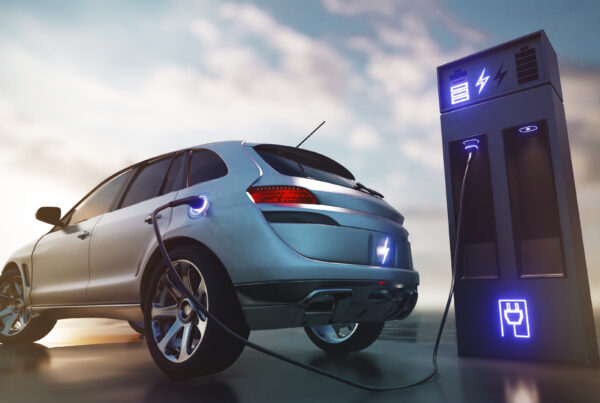Ever wish you had an EV acronym guide? As the fleet and auto industries quickly develop, so does the technical jargon. As you come across more information on EVs, you might scratch your head at how similar a lot of its acronyms are. PHEV, MHEV, FHEV—they all sound the same, but could mean different things. So, what are they?
Don’t fret and read on for a quick guide on commonly used acronyms in the EV industry!
EV = Electric Vehicle
This one’s a no-brainer! If you’re reading this, you probably know what EV means, but we’ll tell you anyway. Electric Vehicles are vehicles that don’t use traditional internal combustion engines like the cars we’re familiar with. Instead, they’re powered by electricity—not fuel, gas, or diesel.
*This may surprise you, but the first EVs were developed as early as the 1800s. In the early 1800s, some of Europe’s scientific minds were already developing the electric engine.
EVSE = Electric Vehicle Supply Equipment
Electric Vehicle Supply Equipment simply refers to equipment that supplies your car or its batteries with electricity. This term is more commonly known as “charging dock” or “charging station.”
BEV = Battery Electric Vehicle
Much like your remote control, Battery Electric Vehicles draw their power from batteries. These vehicles are emission-free, as they completely run on electricity, without any help from fuel. BEVs typically use more than one battery pack to keep the car running. Though there are several types of batteries used in EVs, lithium-ion batteries are the most common in the current EV market.
*You can also find lithium-ion batteries in most electric appliances today, like your phone or laptop.
AEV = All-Electric Vehicle
AEV is an interchangeable term for BEV. All-Electric simply means that this vehicle does not run on or consume fuel.
*Examples of BEV/AEVs include the Nissan LEAF and the Mazda MX-30.
PEV = Pure Electric Vehicle
A Pure Electric Vehicle refers to a vehicle that runs on electricity and whose powertrain is also completely electric.
FCV/FCEV = Fuel Cell Vehicle/Fuel Cell Electric Vehicle
Unlike BEVs, fuel cell vehicles generate their own electricity by using their hydrogen-powered fuel cell batteries. These fuel cells convert hydrogen into electricity to power the vehicle. Fuel cells are not recharged like conventional batteries but are refueled with hydrogen. This EV option is far more environmentally friendly compared to ICEs, as it has zero “tail pipe emissions,” according to the US Department of Energy. These fuel cells are also considered an alternative option for lithium-ion batteries.
*Examples of FCEV include the Toyota Mirai and the 2025 Honda CR-V e:FCEV.
HEV = Hybrid Electric Vehicle
Hybrid Electric Vehicles—or as they’re simply called, hybrids—utilise both a fuel engine and an electric motor.
PHEV = Plug-in Hybrid Electric Vehicle
Just as its name suggests, the plug-in hybrid electric vehicle is charged by plugging it in a charging station. The plug-in hybrid has both an engine and electric motor. These vehicles can run on fuel, electricity, or both simultaneously. Compared to other hybrids, PHEVs carry larger batteries and require charging, like a full EV.
MHEV = Mild Hybrid Electric Vehicle
Unlike its cousins, the mild hybrid electric vehicle cannot be charged and both fuel and electricity must be used in unison. Though they are partly electric, these cars do not charge through stations. Instead, the electricity spent is recuperated by its braking system.
*The Audi Q8 is an example of an MHEV.
BAHV = Battery Assisted Hybrid Vehicle
An interchangeable name for MHEVs.
FHEV = Full Hybrid Electric Vehicle
The main difference that FHEVs have between PHEVs and MHEVs is their battery. FHEVs’ batteries are bigger than MHEVs’ batteries, but smaller than PHEVs’ batteries. Though their motors are more powerful than that of MHEVs’, FHEV are only capable of travelling short distances when running only on electricity. By switching to electricity when stationary or slow, FHEVs help you conserve fuel.
REX/REEV = Range Extender Hybrids/Range Extended Electric Vehicle
REX or REEVs are cars with built-in auxiliary power units (APU) that extend the range your car can go. The APU is almost like a charger that boosts your car’s battery life. This is the perfect type of car from drivers who suffer from “range anxiety.”
NEV = New Energy Vehicle
New Energy Vehicle, or NEV, is a catch-all term for cars that predominantly or exclusively use electricity. Manufacturers originally coined this term in China, around 2009.
Are you all caught up? We’ve gathered just a handful of the most commonly used acronyms in the EV field. While we haven’t captured every single one just yet, bookmark this EV acronym for guide whenever you’re feeling stumped on a new term.
Was this article informative? Leave us a like and keep your eyes peeled to our news alert for more!



















